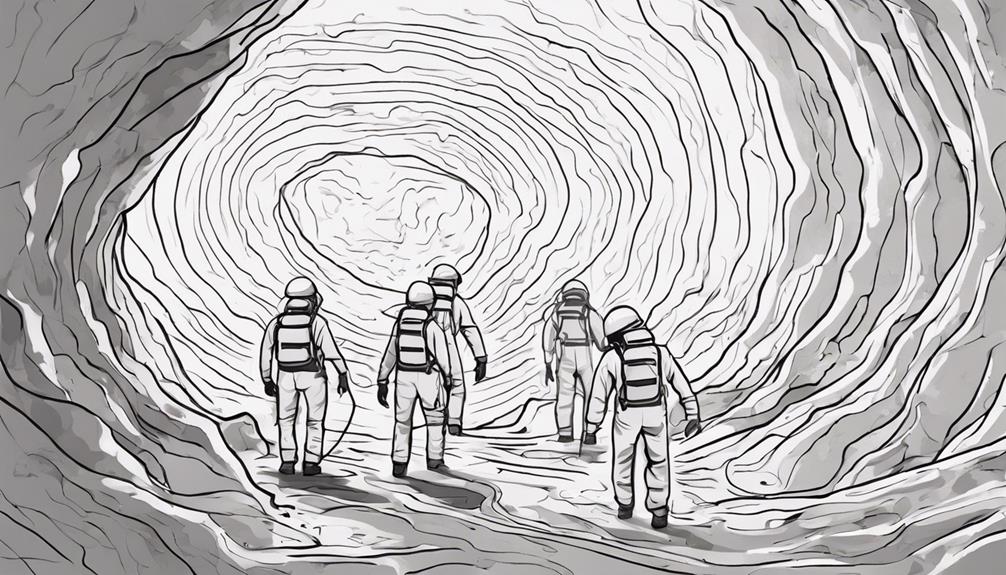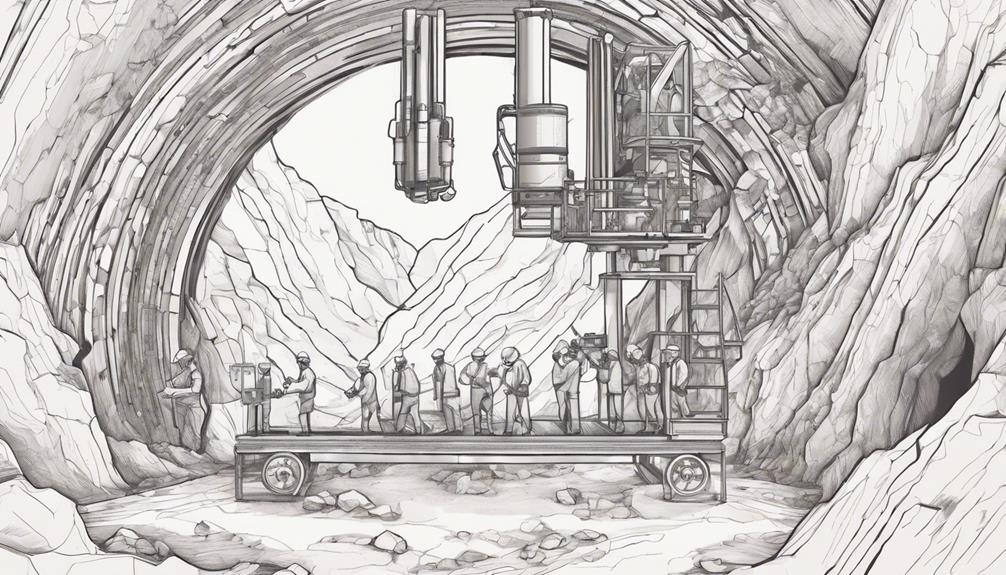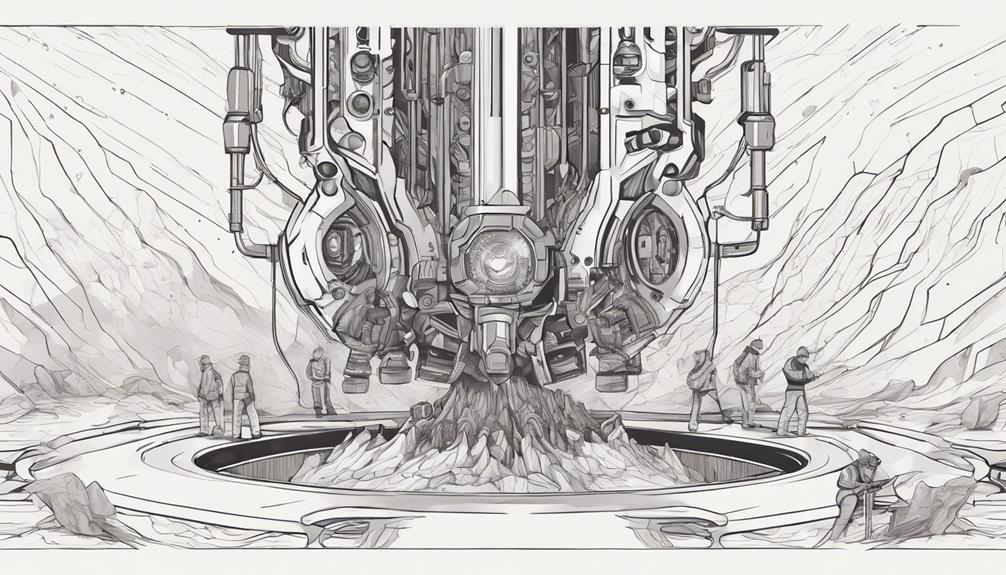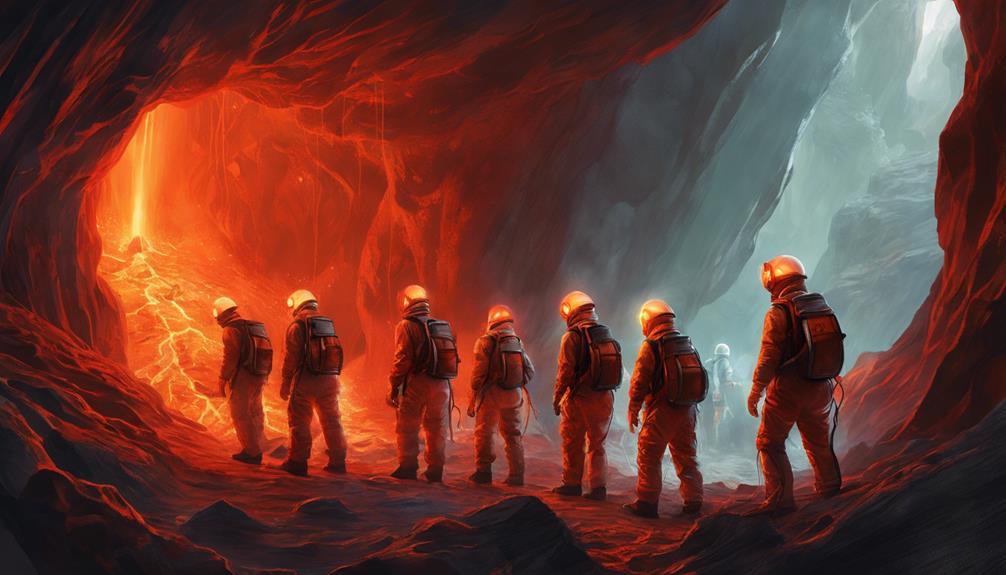Exploring the depths of the Earth's core remains a tantalizing prospect that continues to intrigue scientists and researchers alike. The technical challenges posed by extreme conditions, coupled with the limitations of current drilling methodologies, have hindered our ability to venture deeper into the planet's inner layers. However, recent advancements in materials science and drilling technologies have sparked renewed interest in unlocking the secrets buried beneath the Earth's surface. As we ponder the feasibility of such a monumental endeavor, the potential discoveries awaiting us at the Earth's core beckon us to push the boundaries of exploration further than ever before.
Key Takeaways
- Advanced technologies are essential for exploring Earth's inner layers.
- Insights into planetary evolution and magnetic field generation are possible.
- Understanding core dynamics aids in predicting magnetic field changes.
- Collaborative efforts in innovation are crucial for unlocking core mysteries.
Challenges of Earth's Inner Layer Exploration

Exploring the depths of the Earth's inner layers presents formidable challenges due to extreme temperatures, immense pressures, and the need for specialized drilling equipment. The Earth's inner core, located approximately 4,000 miles beneath the surface, is a realm of intense heat, with temperatures surpassing 5,700°C, akin to the sun's surface. The pressure at the core is over 3 million times greater than at the surface, creating an environment where traditional equipment would fail.
To reach the Earth's core involves traversing through the crust, mantle, outer core, and finally, the inner core. The scientific community relies on seismic waves to study these layers, providing insights into the Earth's composition and behavior. However, reaching the inner core necessitates advanced drilling equipment capable of withstanding extreme conditions. The development of such technology is crucial for expanding our understanding of the Earth's innermost layers and unlocking the mysteries they hold.
Technology for Deep Earth Exploration
Utilizing cutting-edge technologies and innovative engineering solutions is imperative for advancing the field of deep Earth exploration. By developing tools that can withstand high temperatures and material limitations, scientists aim to delve deeper into the Earth's layers, including the crust, mantle, outer core, and eventually reach the Earth's core at the center of the Earth. The Kola Superdeep Borehole in Russia stands as a testament to human efforts in this realm, reaching a depth of 12,262 meters. Proposed concepts like a self-sinking nuclear capsule could potentially penetrate up to 100 km over 30 years by melting through the Earth's crust. Monitoring techniques, such as analyzing sounds during descent, offer valuable insights into the Earth's interior, aiding in understanding its composition and structure. Collaboration among interdisciplinary teams of scientists and engineers remains crucial for overcoming the challenges associated with deep Earth exploration and pushing the boundaries of our knowledge about the Earth's interior.
| Earth's Layers | Description | Technological Advancements |
|---|---|---|
| Crust | Earth's outermost layer | Tools resistant to high temperatures |
| Mantle | Lies beneath the Earth's crust | Self-sinking nuclear capsule concept |
| Outer Core | Composed of molten iron and nickel | Monitoring techniques during descent |
| Inner Core | Solid iron-nickel alloy at the center of the Earth | Collaborative efforts among scientists and engineers |
Potential Discoveries Beneath Earth's Surface

Advancements in technology have paved the way for potential discoveries beneath Earth's surface, offering insights into the composition and dynamics of the inner core.
- Unveiling the mysteries of Earth's depths may lead to advancements in understanding planetary evolution.
- Discoveries may include insights into the generation of Earth's magnetic field from the outer core.
- Studying the inner core could provide clues about the planet's geological history and formation.
- Exploration efforts could reveal the presence of seismic anomalies and structures within the core.
Exploring miles beneath the Earth's surface holds the promise of unraveling the inner workings of our planet. By delving into the Earth's core, scientists aim to decipher the inner core dynamics that shape our world. Understanding the Earth's core composition and seismic anomalies could provide significant clues regarding the planet's geological history and evolution. Furthermore, insights into Earth's magnetic field generation from the outer core could shed light on fundamental processes influencing planetary dynamics.
Implications of Reaching Earth's Core
Reaching the Earth's core offers profound implications for understanding the dynamics of the planet's magnetic field and core composition. The Earth's core consists of the inner core and outer core, with the inner core being a solid sphere primarily composed of iron and nickel. This solid inner core plays a crucial role in influencing the convection currents in the outer core, which in turn generate Earth's magnetic field. By studying the core composition, scientists can gain insights into the processes that drive the Earth's magnetic field dynamics.
Moreover, variations in the rotation of the inner core can have significant effects on the stability of Earth's magnetic field. Understanding these dynamics is essential for predicting changes in the magnetic field and, consequently, its impact on various geophysical processes. Research on the Earth's core composition not only helps in interpreting past changes in the magnetic field but also aids in forecasting potential future variations. Thus, delving into the Earth's core can provide invaluable knowledge about the intricate relationship between the core composition, magnetic field dynamics, and the overall stability of Earth's magnetic field.
Future Prospects in Subterranean Exploration

The pursuit of future prospects in subterranean exploration entails the exploration of innovative technologies and collaborative efforts to delve deeper into the Earth's interior, aiming to unravel unprecedented insights into the planet's hidden realms.
- Proposed methods for deeper exploration include self-sinking nuclear capsules designed to melt through the Earth's crust using radioactive cobalt-60 and tungsten.
- Theoretical concepts like the gravity train, which could revolutionize transportation and resource utilization, have been proposed for deep Earth exploration.
- Advancements in nanotechnology and materials science are seen as potential enablers for deeper exploration into the Earth's interior.
- Collaboration among scientists and engineers is crucial for pushing the boundaries of deep Earth exploration and unlocking mysteries of the Earth's core.
Frequently Asked Questions
Is It Possible to Go to Center of Earth?
Exploring the center of the Earth is currently beyond our technological capabilities due to extreme temperatures, pressure, and the Earth's layers. However, advancements in geothermal energy, understanding volcanic activity, mapping underground caves, studying the Earth's magnetic field, subterranean life, and tectonic plates provide insights into this inaccessible realm. Innovative technologies and scientific progress may one day allow for deeper exploration, but challenges remain in overcoming the harsh conditions of the Earth's core.
Is It Possible to Go to the Core of the Earth?
Exploring the core of the Earth remains a formidable challenge due to its extreme conditions like temperatures surpassing 5,700°C, immense pressures, and the solid iron-nickel composition of the inner core. Scientists study seismic waves, geothermal energy, and Earth's magnetic field to understand mantle dynamics, aiding geological exploration. While aspirations exist to delve deeper, the Earth's core remains an elusive destination, requiring innovative technologies for potential future exploration.
Can I Go to the Centre of the Earth?
Exploring the Earth's core is a profound challenge due to extreme conditions like high temperatures and pressures. The journey to the center involves traversing through the Earth's mantel and outer core, which are layers of immense thickness and complexity. This subterranean adventure captures the essence of Earth's mysteries, offering a deep dive into the hidden depths of our planet. Understanding the inner layers requires innovative technology and a deep commitment to unraveling Earth's secrets.
Has Anyone Ever Traveled to the Core of the Earth?
Exploring the core of the Earth remains a feat yet to be accomplished by humans. No individual has ventured to the Earth's center, nearly 4,000 miles below the surface. This deep exploration into Earth's interior poses significant challenges due to extreme depths and the harsh conditions of the subterranean environment. While there is fascination around the idea of an inner journey, the technology and resources required for such a core exploration are currently beyond our reach.
Conclusion
In conclusion, the challenges of exploring the center of the Earth are immense, yet advancements in technology offer hope for future exploration. The potential discoveries beneath the Earth's surface could revolutionize our understanding of the planet and lead to groundbreaking innovations. As we strive towards unlocking the mysteries of the Earth's core, the implications of such a feat are vast and could shape the future of scientific discovery. The prospect of reaching the Earth's core remains a tantalizing goal for researchers worldwide.
